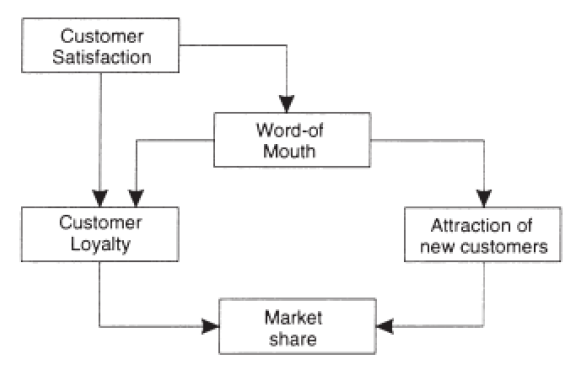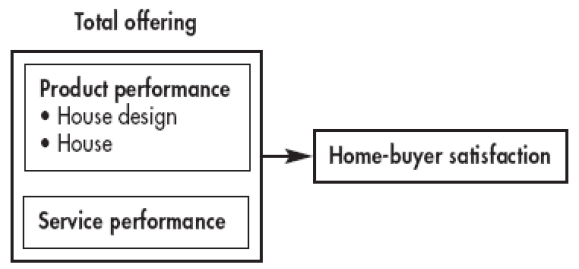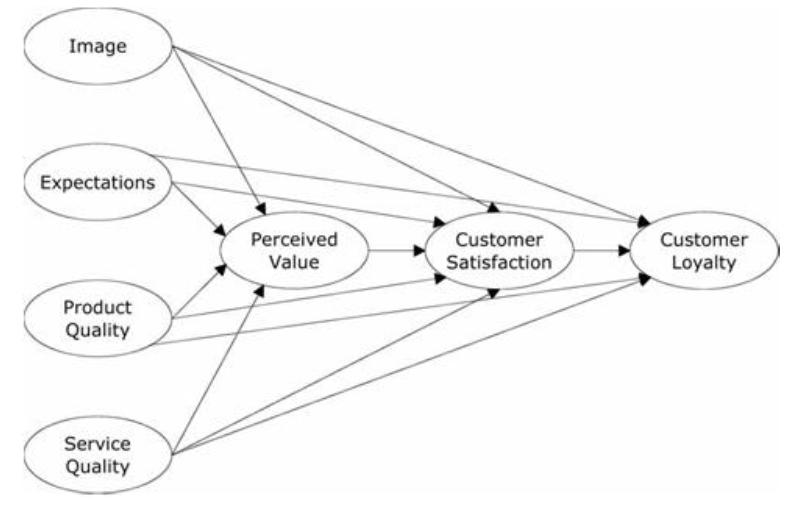ABSTRACT
Purpose
More companies in the building sector are starting to realize the importance of using customer satisfaction as a tool to enhance their competitive advantage. Customer satisfaction brings several positive aspects to a company, which can contribute to a successful business. It is crucial to fulfill customers‟ wants and needs in order to obtain customer satisfaction.
Building a house is one of the largest investment people make in life, with important decisions that can affect their current way of living. Customer satisfaction is, therefore, crucial for a company like Trivselhus, where it is essential to keep their customers satisfied by offering the right products that fulfill their expectations.
Another increasingly important aspect in people‟s lives today is the environment. This has now come to affect the house building industries as they have to fulfill customer expectations regarding energy efficiency and environmental friendliness.
Method
To answer the purpose, primary data have been collected by conducting a telephone sur-vey. The survey was made randomly among Trivselhus customers. From the different theo-ries, important categories that affect customer satisfaction were found. Aspects from all these categories were included in the questionnaire to explain customer satisfaction. The analysis is based on statistical data generated from the survey. Central tendency values and regression analysis makes it possible to explain which variables affect customer satisfaction among Trivselhus customers.
Conclusion
The outcome of the research signifies, that customer satisfaction among Trivselhus cus-tomers has not changed during all the years covered in this research. There are several va-riables affecting customer satisfaction. These variables are included in different categories; Complaints, Expectations, Service Quality, Energy, Product Quality, and Image. Further-more, there is not enough evidence to prove that energy efficiency and environmental friendliness affect customer satisfaction geographically.
FRAME OF REFERENCE

Figure 1 (Matzler & Hinterhuber, 1998, p. 28).
They go on by saying that an increase in market share is direct linked to an increase in customer satisfaction and loyalty. It is believed that a high level of customer satisfaction and perceived quality have a positive effect on market share as a result of word-of-mouth of satisfied customers (see Figure 1) (Matzler and Hinterhuber, 1998). This is strengthened by Burns and Bowling (2010) who claim that there is a positive relationship between customer satisfaction and word-of-mouth behavior.

Figure 2 (Torbica and Stroh, 2000, p. 34).
The model (Figure 2) explains that product and service performance determine customer satisfaction, were product represent the actual house and the service represent the service provided before, after, and during the building process. Torbica and Stroh (2000) explain that the satisfaction of home-buyers is reached when the customer‟s wants and needs of the product and service are fulfilled.

Figure 3 (Eskildsen & Kristensen, 2008, p. 844).
Inspired by the Swedish Customer Satisfaction Barometer (SCSB) and the American Customer Satisfaction Index (ACSI), a unified measurement of customer satisfaction for Europe was developed (Eskildsen and Kristensen, 2008). The European Performance Satisfaction Index (EPSI) (Figure 3) was introduced in 2000 after a one-year long pilot study conducted in 11 European countries (EPSI Rating, 2010).
METHOD
Climate Zones
When making the sampling for the research, the authors used the three different climate zones that Boverket has established (Johansson, 2009). Since Boverket is an official central government authority it is a credible source and though there are some other definitions on how Sweden‟s climate zones could be divided the decision to take use of Boverket definition was made.
EMPIRICAL FINDINGS
Central Tendency Values
In this section, the different central tendency values will be presented. The values are created by using the descriptive statistics function in Microsoft Office Excel 2007. This section is divided up after the different types of questions that were asked in the questionnaire. They are divided up in the following categories: Introduction Questions, Image, Expectations, Product Quality, Energy, Service Quality, Complaints, Word-of-Mouth and Total Satisfaction. Each question is measured seven times, first following the 5 different time periods that were included in the research. Also together with one special group and one total group where all the answers for all periods were included, independent on from which time period.
ANALYSIS
This section analyzes all the findings. The analyses are done for all the different groups that were included in the regression. Note that it is the Special Group -2 that it is analyzed in this case. The Special Group – 1 is not included in the analysis. Special Group – 1 does, compared to Special Group – 2, only include the participants that made complaints.
The decision was made to only present the central tendency values from Special Group – 1 to state the factual results. However, as shown in the regression models, and as analyzed in this section, complaints are a factor that affects customer satisfaction. That is why the authors chose to exclude this group from the regression since it already is known what the main problem is from this group. The author felt that it was of greater importance for the research and the company to focus on Special Group – 2 in the analysis. This in order to see which variables that affects customer satisfaction when the products deliver on its full capacity.
CONCLUSION
The purpose of this thesis was to investigate the customer satisfaction among Trivselhus‟ customers over a period of 10 years. This purpose is fulfilled when answering the research questions presented below.
Research Question 1: Have the customer satisfaction among Trivselhus customers changed over a 10- year period?
There is a high level of customer satisfaction among Trivselhus‟ customers during all the years that is covered in this research. The results are conclusive; Customer satisfaction has not changed during this period of 10 years.
Research Question 2: What are the main factors that affect customer satisfaction?
There are several variables affecting customer satisfaction. In order to generalize the answer, these variables are included in different categories. The categories are Complaints, Expectations, Service Quality, Energy, Product Quality, and Image.
The category that includes most variables that affect customer satisfaction is Complaints. Expectations include second most variables and can also be considered to be an important factor that affects customer satisfaction. Energy and Service Quality include the same amount of variables that affect the determination of customer satisfaction. There are also several variables included in Product Quality that affect how satisfied the customers will become. Image was also included, although, with the least number of variables.
Research Question 3: Do energy efficiency and environmental friendliness affect customer satisfaction geo-graphically?
There is no substantial difference between the three climate zones regarding attitudes to-wards energy efficiency and environmental friendliness. However, one can detect a slightly higher concern regarding energy efficiency in Climate Zone 1, implying that customers in Climate Zone 1 is a bit more interested in lowering their energy consumption. One can also conclude that customers in Climate Zone 3 are generally very satisfied, whereas customers in Climate Zone 2 and Climate Zone 1 are less satisfied.
This implies that there is a geo-graphical difference of customer satisfaction. However, one has to take into consideration that there are several other variables that affect customer satisfaction, which makes it hard to argue that energy efficiency and environmental friendliness alone have this impact. Fur-thermore, the sample size for Climate Zone 1 and Climate Zone 2 are small, and normal distribution cannot be assumed. Nonetheless, it is obvious that customer satisfaction differ between customers in Climate Zone 1 and Climate Zone 3.
DISCUSSION
Throughout this research, the words customer satisfaction and Trivselhus are the two main keywords that have been used. Two different words with completely different meanings. However, in this research the two have been combined to make a research, which has put both of them in a new light. Customer satisfaction is something that includes many different theories that is usually not applied within the building industry that Trivselhus operates in. In the same meaning, the authors got the impression that customer satisfaction is a widely used word within the company without the full and complex understanding of the concept.
Source: Jonkoping University
Authors: Linus Ivarsson | Alexander Nilsson | Torbjörn Rimfält
